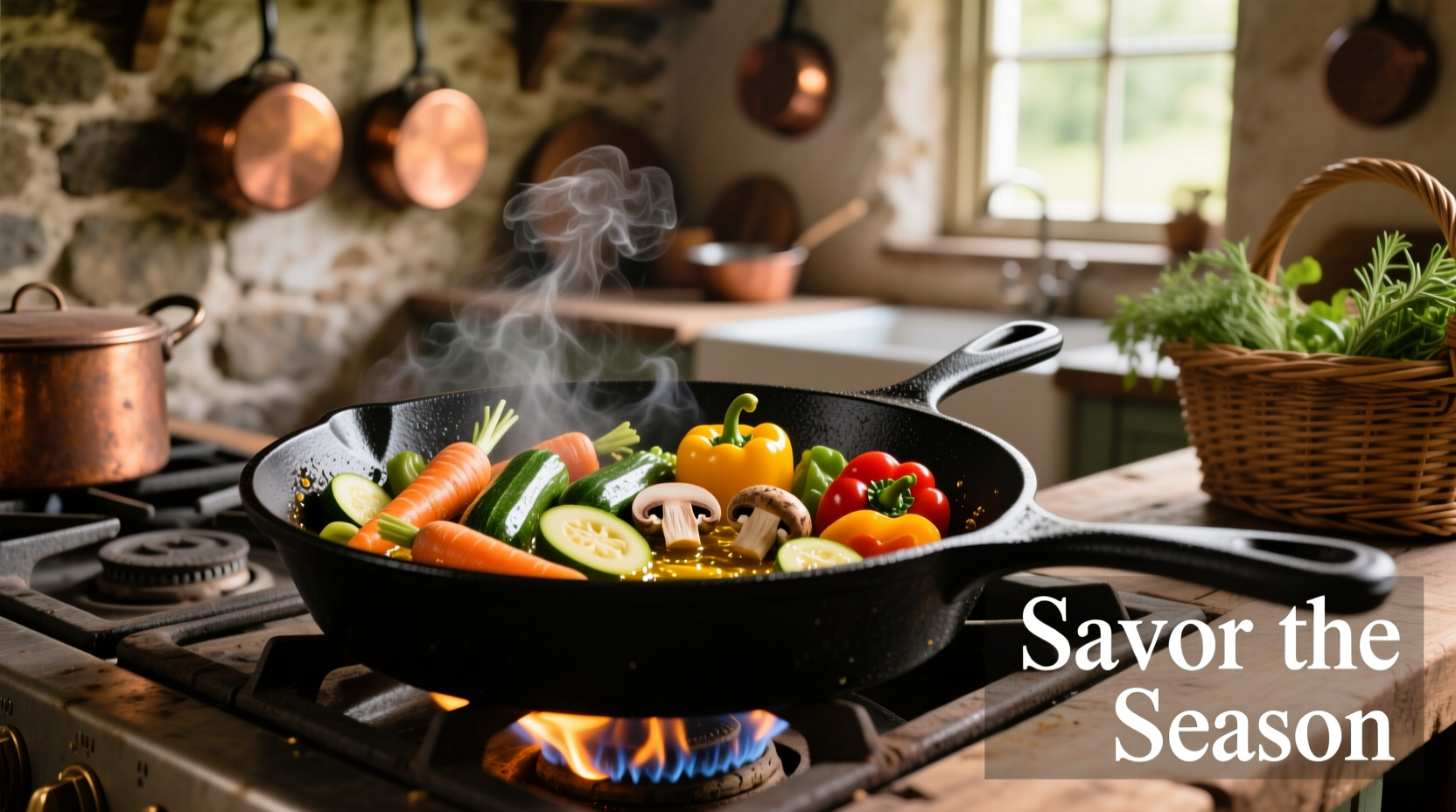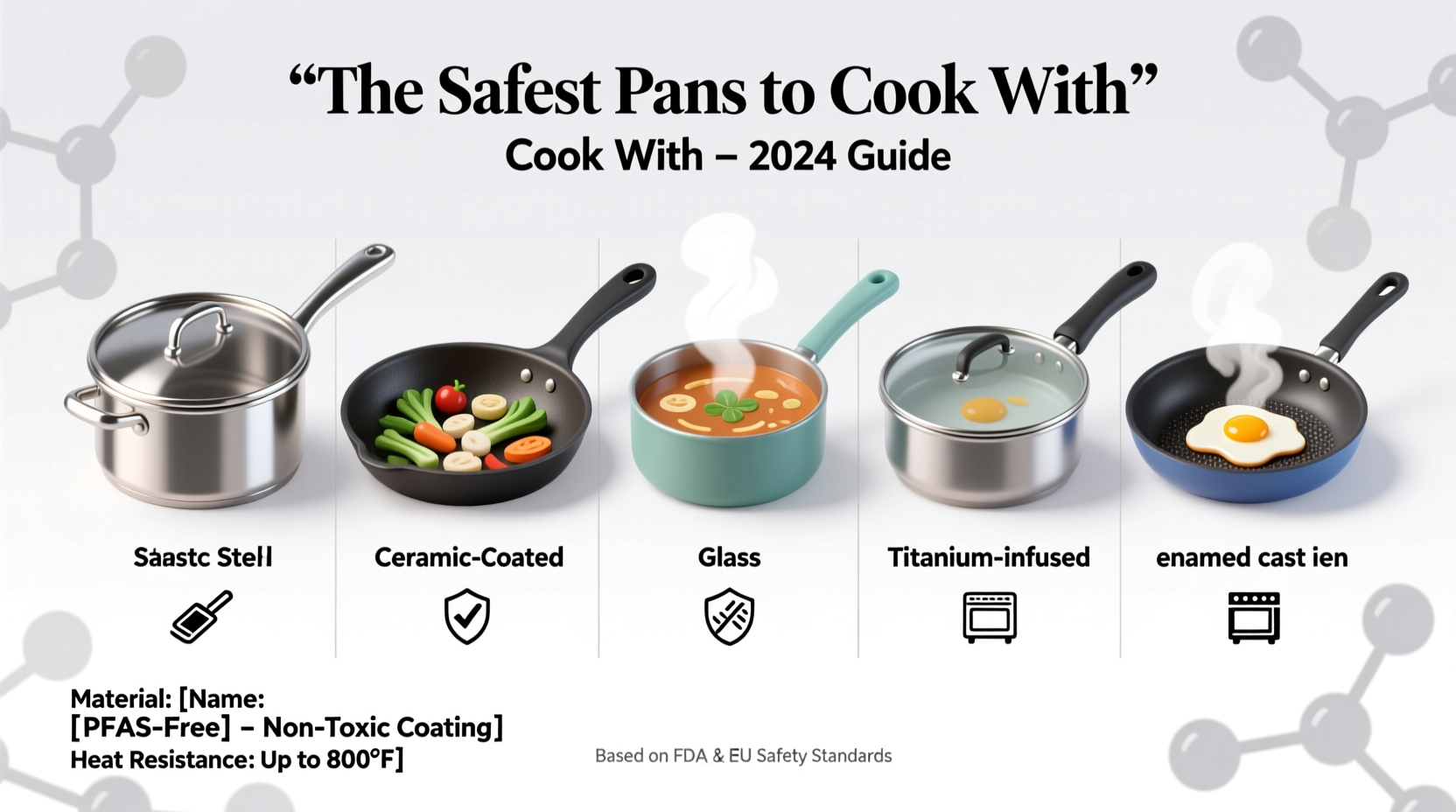Choosing the right cookware isn't just about cooking performance—it directly impacts your health. Many conventional pans contain materials that can leach harmful substances into your food, especially when heated or scratched. With growing awareness about kitchen safety, home cooks increasingly seek cookware that won't compromise their family's wellbeing. This comprehensive guide cuts through marketing claims to deliver science-backed information about truly safe cooking surfaces.
Why Cookware Safety Matters More Than You Think
Every time you heat food in a pan, microscopic interactions occur between the cooking surface and your ingredients. Certain materials can release compounds into your meals, particularly when exposed to high heat, acidic foods, or physical damage. The U.S. Food and Drug Administration (FDA) monitors food contact substances, but regulatory standards don't always address long-term, low-level exposure concerns that many health-conscious consumers worry about.
Materials to Avoid: The Hidden Risks in Common Cookware
Understanding what makes certain pans unsafe helps you make better choices. Here's what research shows about problematic materials:
Conventional Non-Stick Coatings (PTFE/Teflon)
While convenient, traditional non-stick coatings contain perfluoroalkyl substances (PFAS) that can degrade when heated above 500°F (260°C). The Environmental Protection Agency (EPA) has phased out certain PFAS compounds due to health concerns, but replacement chemicals still raise questions. According to research published in Environmental Science & Technology, these compounds can persist in the environment and potentially accumulate in the human body.
Aluminum Pans (Uncoated)
Uncoated aluminum can react with acidic foods like tomatoes or citrus, potentially increasing aluminum intake. While the World Health Organization considers normal dietary aluminum exposure safe, some studies suggest a possible link between high aluminum exposure and neurological concerns. The World Health Organization recommends avoiding cooking acidic foods in uncoated aluminum.
| Cookware Material | Safety Rating | Key Concerns | When It Becomes Risky |
|---|---|---|---|
| Traditional Non-Stick (PTFE) | Low | PFAS chemicals, fume emissions | Heated above 500°F, scratched surface |
| Uncoated Aluminum | Moderate | Aluminum leaching | Cooking acidic foods, prolonged use |
| Copper (Unlined) | Low | Copper toxicity | Cooking any food, especially acidic |
| Cast Iron | High | Iron leaching (generally beneficial) | Only when seasoning is compromised |
| Stainless Steel | High | Minimal nickel/chromium leaching | Rare with quality 18/10 stainless |
| Ceramic-Coated | High | Generally inert surface | Only if coating chips significantly |
The Safest Cookware Options: Science-Backed Choices
Cast Iron: The Time-Tested Champion
Properly seasoned cast iron provides a naturally non-stick surface without synthetic chemicals. The American Journal of Clinical Nutrition has documented that cooking in cast iron can increase dietary iron—a benefit for many, particularly women of childbearing age. Modern manufacturing ensures consistent quality without the impurities found in antique pieces.

Key safety advantages:
- Naturally non-toxic when properly maintained
- Can improve dietary iron intake
- Durable for generations with proper care
- Works on all cooking surfaces including open flame
Important usage notes: Avoid cooking highly acidic foods like tomato sauce in cast iron until the seasoning is well-established. Newer pre-seasoned options from brands like Lodge have significantly reduced this limitation.
High-Quality Stainless Steel: The Professional's Choice
Look for 18/10 stainless steel (18% chromium, 10% nickel) which provides excellent corrosion resistance. The Food and Chemical Toxicology journal confirms that high-quality stainless steel shows minimal metal leaching—well below safety thresholds—under normal cooking conditions.
Why it's safe:
- Inert surface that doesn't react with foods
- No coatings to degrade or flake off
- Excellent heat distribution when properly constructed
- 100% recyclable at end of life
Smart selection tip: Choose tri-ply or multi-ply construction with an aluminum or copper core for even heating without direct food contact with reactive metals.
Ceramic-Coated Cookware: Modern Non-Toxic Option
Modern ceramic coatings use inorganic materials fired at high temperatures, creating a glass-like surface. Unlike early ceramic options, today's premium brands like GreenPan use Thermolon technology that's free from PFAS, PFOA, lead, and cadmium. The European Food Safety Authority has confirmed the safety of properly manufactured ceramic coatings.
Safety considerations:
- Ensure coatings are certified by independent labs
- Avoid metal utensils to prevent scratching
- Higher quality versions maintain non-stick properties longer
- Generally oven-safe up to 400-450°F
Evolution of Cookware Safety Standards
Understanding how cookware safety has evolved helps contextualize today's options:
- Pre-1950s: Cast iron and carbon steel dominated home kitchens—durable but required maintenance
- 1950s-1970s: Aluminum and early non-stick coatings gained popularity with little safety testing
- 1980s-2000s: Concerns about aluminum and Teflon emerged; stainless steel became professional standard
- 2000s-Present: PFAS phase-out begins; ceramic and advanced non-stick alternatives develop
- 2020s: Third-party certification programs (like NSF) become important safety indicators
Context-Specific Safety Considerations
The "safest" pan depends on your specific cooking needs:
For High-Heat Cooking
Cast iron and carbon steel excel here. They withstand temperatures exceeding 500°F without degradation—unlike most non-stick options. The Journal of Agricultural and Food Chemistry confirms cast iron's stability even at extreme temperatures.
For Acidic Foods
Stainless steel is your safest bet for tomato-based sauces, citrus dishes, or wine reductions. While modern ceramic coatings handle mild acidity well, prolonged exposure to highly acidic foods can eventually compromise even the best coatings.
For Everyday Family Cooking
A combination approach works best: stainless steel for versatility, cast iron for searing, and ceramic-coated for eggs and delicate foods. This spreads wear and ensures you always have the right tool for safety and performance.
Practical Buying Guide: What to Look For
When shopping for safe cookware, focus on these evidence-based factors:
Certifications That Matter
Look for these independent verifications:
- NSF International certification: Validates food contact safety
- California Proposition 65 compliance: Ensures below safety threshold for listed chemicals
- OEKO-TEX certification: Confirms absence of harmful substances
Construction Quality Indicators
- Heavier weight typically indicates better materials and heat distribution
- Riveted handles withstand heat better than glued attachments
- Full-clad construction outperforms disk-bottom designs for even heating
Maintenance Practices That Preserve Safety
Even the safest pans become problematic with improper care:
Cast Iron Care Protocol
- Clean with hot water and stiff brush (avoid soap)
- Dry thoroughly on stove to prevent rust
- Apply thin layer of oil while warm
- Store in dry place with paper towel between pans
Stainless Steel Maintenance
Avoid abrasive cleaners that can scratch the surface. For stubborn residue, use baking soda paste rather than harsh chemicals. The FDA recommends against using steel wool on stainless steel as it can leave particles that might transfer to food.
Ceramic-Coated Preservation
Use wooden, silicone, or nylon utensils exclusively. Hand wash with non-abrasive cleaners. Never preheat empty ceramic-coated pans, as this can damage the coating. Replace when significant scratching appears.
Setting the Record Straight: Common Safety Myths
Several misconceptions persist about cookware safety:
"All non-stick is dangerous"
Modern ceramic and diamond-infused non-stick options have eliminated the concerns associated with traditional Teflon. The key is understanding the specific coating technology.
"Stainless steel leaches dangerous metals"
Quality 18/10 stainless steel shows minimal leaching—far below safety thresholds. Research in Food Additives & Contaminants confirms this is not a health concern under normal cooking conditions.
"Cast iron adds too much iron to food"
For most people, the additional iron from cast iron cooking is beneficial. Only those with hemochromatosis (iron overload disorder) need to monitor this, and even then, the amounts are typically within safe limits.
Making Your Final Decision
When selecting the safest cookware for your kitchen, prioritize these evidence-based considerations:
- Choose materials with independent safety certifications
- Match the pan type to your most frequent cooking methods
- Invest in quality construction that will last years
- Commit to proper maintenance routines
- Replace damaged cookware promptly
Remember that no single pan type works perfectly for every situation. Building a small collection of high-quality pieces in different materials provides the safest, most versatile kitchen. Focus on reputable brands with transparent manufacturing practices rather than chasing the cheapest options.











 浙公网安备
33010002000092号
浙公网安备
33010002000092号 浙B2-20120091-4
浙B2-20120091-4